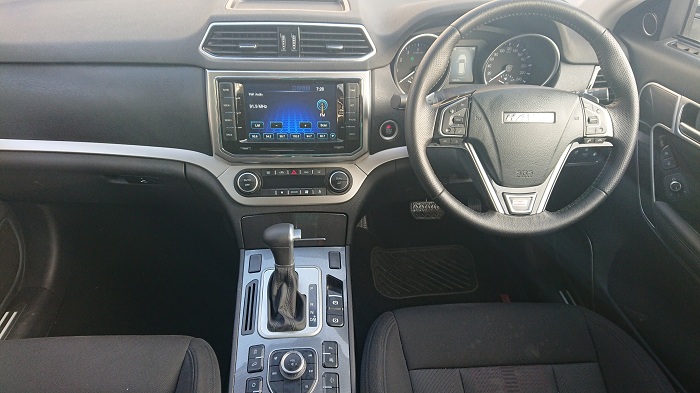This is most evident in the small H2 which proved impressive in the standard equipment department, but as mentioned when Autodealer tested the entry-level City and flagship Luxury models, was let down by a lazy drivetrain, iffy trim and the lingering brand perception of driving a Chinese vehicle.
Road tripping in the H6 C
The upscale H6 C though rectified the H2’s shortcomings to an extent when editor Sean Nurse tried it out last year. Even in City spec, the H6 C was praised for its looks, a smart looking interior and a better-sorted powertrain.
As is the case though, a proper evaluation of a vehicle’s talents involves spending as much with it as possible, which in the case of this particular H6 C, a vehicle doing duty as the long termer of our colleagues at Leisure Wheels magazine, came in the form of a 1 000km plus road trip to the Eastern Cape over the recent Easter long weekend.
Copy-and-paste styling gone
Viewed at first glance, the H6 C is yet another departure from the copy-and-paste jobs associated with Chinese vehicles, and frankly rates as one of the better-looking offerings on sale today.
Compared to the H2, the H6 C boasts a more aggressive appearance by virtue of its chrome grille, slanted windscreen, angular headlights with integrated daytime running LEDs, smart 17-inch alloy wheels and an outstretching bonnet.
Sadly though, the rear adopts a more generic look similar to that of the H2, with the only standouts being the faux satin silver diffuser, HAVAL lettering on the bootlid and boot spoiler.
Interior is suitably upmarket
Open the front door and you are greeted by a rather modern and decidedly un-Chinese interior. Highlighted by an eight-inch touchscreen infotainment system, the quality of materials used are both soft to the touch and upmarket, with the sole black mark being the rather cheap feeling imitation aluminium trim.
That side, the interior feels solid and logically laid out from the infotainment system to the centre console with its succession of buttons for the audio system, drive mode selector, vehicle dynamics and mood lighting.
Space max(ed)
It is, however, the space on offer that surprises, and none more so than in the back. While the front seats are comfortable, rear passengers are in for a treat with truly excellent levels of head and leg room despite the sloping roof, plus the benefit of a central armrest with storage area and dual cupholders.
Base spec, lots of equipment
Like the H6 C Sean tested, Haval has provided Leisure Wheels with the base City automatic, but its list of equipment is anything but poverty spec with dual-zone climate control, Hill Start Assist, rain sense wipers, electric windows all around, folding electric mirrors, front and rear parking sensors with reverse camera, auto on/off headlights, cruise control, keyless go and Bluetooth and USB being notable features.
Only petrol power?
For many buyers though, the H6 C’s biggest limitation will be its engine. Displacing 2.0-litres, the turbocharged petrol engine is the sole option on all models and despite its notable outputs of 140kW/310Nm, the lack of a diesel mill will be deterrent for many interested buyers.
While the engine pulls well and comes to the fore when you select Sport mode, it quickly develops a penchant for unleaded and is further blighted by the Getrag developed six-speed dual-clutch gearbox. As seamless as it is on the move, the ‘box represent the early days of dual-clutch setups and shudders in slow moving traffic and reacts too slow when you put in manual mode and use the shift paddles.
Respectable consumption
Over the course of the weekend, the H6 C travelled a total of 2 211km and returned an indicated fuel consumption figure of 8.2-litres/100km, although a best of 7.5-litres/100km was obtained heading down to the coast. Still, we remain of the view that a diesel would have been a better choice.
Conclusion
The H6 C has shown that Haval means business and never once missed a beat on its long haul. In addition to being comfortable and impressing both friend and foe wherever it went, it represents great value for money at R359 900 for the City auto.
It certainly is an achievement for a Chinese vehicle, but as mentioned, it would need a lot more than just an attractive price and lofty levels of in-car kit to tempt South Africans away from the established brands.

















